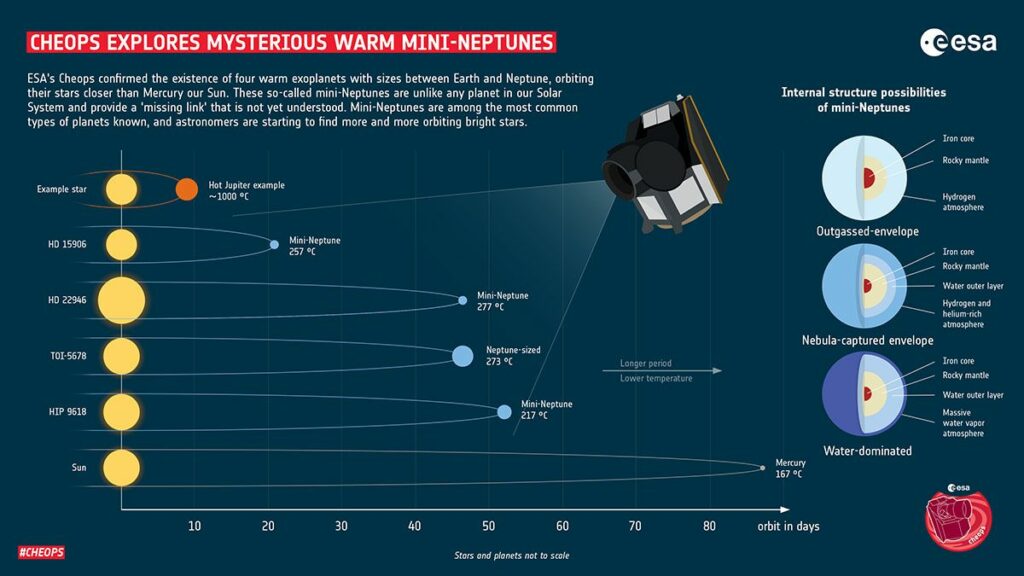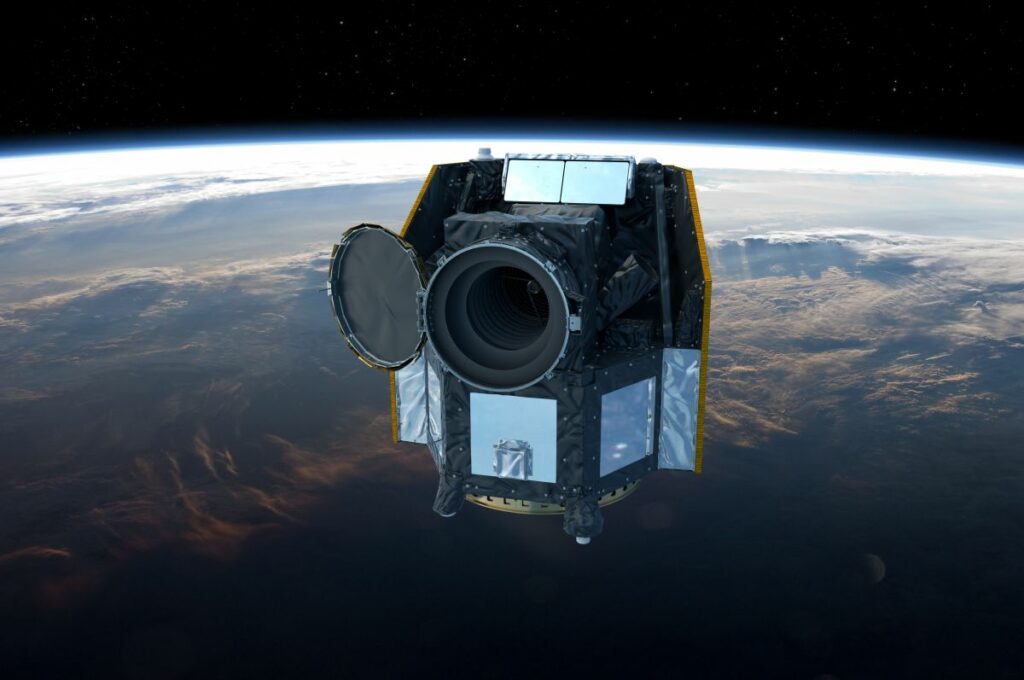Astronomers Spot Four ‘Mini-Neptune’ Exoplanets in a Celestial Game of Hide-and-Seek
Mini-Neptunes are smaller and farther from their stars, and thus harder to spot, than many other exoplanets.
Utilizing a cosmic hide-and-seek approach, scientists have detected four recently discovered “mini-Neptunes” encircling a distant star.
These exoplanets belong to the category of mini-Neptunes, characterized by their smaller size and greater distance from their host stars compared to the more detectable hot Jupiters, which are massive and orbit closely. The detection of mini-Neptunes is considerably more challenging.
The newfound planets orbit different stars and range in size from Neptune-like proportions to slightly smaller, measuring approximately two to five times the size of Earth. Among them, two exoplanets orbit the same orange dwarf star, HD 15906, located 149 light-years away from our solar system.
Leading the research, a team of scientists from the University of Bern and the University of Geneva in Switzerland identified the mini-Neptunes utilizing the Characterising Exoplanet Satellite (CHEOPS), a European Space Agency exoplanet-hunting spacecraft. The discovery was prompted by NASA’s Transiting Exoplanet Survey Satellite (TESS), which initially detected the presence of these exoplanets. Both instruments function by observing dips in light caused by exoplanets as they transit across their parent stars.
“While NASA’s TESS satellite excels at detecting the transits of exoplanets, even for the most challenging small planets,” explained Hugh Osborn, an astrophysicist involved in the research from the University of Bern, “it changes its field of view every 27 days in order to scan rapidly most of the sky, which prevents it from finding planets on longer orbital periods.”
TESS observed single transits of two exoplanets, namely TOI 5678 b and HIP 9618 c, which are approximately 4.9 and 3.4 times the size of Earth, respectively, as they crossed in front of their host stars. However, these observations alone were insufficient to confirm the existence of the planets.

This is where CHEOPS came into play. Employing a focused approach based on TESS clues, CHEOPS scientists endeavored to detect additional transits without investing significant amounts of time on each planetary system.
“We then play a sort of ‘hide and seek’ game with the planets, using the CHEOPS satellite,” stated Osborn. “We point CHEOPS towards a target at a given time, and depending if we observe a transit or not, we can eliminate some of the possibilities and try again at another time until there is a unique solution for the orbital period.”

After several attempts and employing software that proposed and prioritized candidate periods for each planet, the team successfully confirmed the existence of the two exoplanets. Furthermore, they determined that TOI 5678 b orbits its star every 48 Earth days, while HIP 9618 c completes an orbit around its star, located approximately 230 light-years away from our solar system, every 53 Earth days.
Using the same methodology, astronomers also identified two other mini-Neptunes, HD 15906 b and c, within another planetary system. HD 15906 b has a diameter roughly 2.3 times that of Earth and completes an orbit around its orange dwarf star every 11 Earth days, while HD 15906 c has a diameter slightly under three times that of Earth and appears to orbit the same star at a greater distance, with an orbital period of approximately 22 Earth days.
By conducting further observations using ground-based telescopes, the astronomers were able to obtain a rough estimate of the planets’ masses by tracking the slight movements, or “wobbles,” induced in their parent stars. Based on this data, they calculated the densities of the exoplanets. However, this information alone was insufficient to determine the compositions of the mini-Neptunes.
“For mini-Neptunes, density alone is not sufficient, and there are still several hypotheses regarding their composition,” explained Ulmer-Moll. “They could either be rocky planets with significant amounts of gas or water-rich planets with a highly humid atmosphere.” Ulmer-Moll also highlighted that since the newly discovered exoplanets orbit bright stars, they have become prime targets for the James Webb Space Telescope (JWST) mission, which may help unravel the mystery of their composition.
The mini-Neptunes are situated at greater distances from their parent stars compared to typical hot Jupiters, and their relatively cool temperatures suggest the possibility of retained atmospheres and clouds that could be investigated by the JWST. Additionally, due to their smaller sizes and longer orbital periods, these mini-Neptunes could serve as valuable candidates for studying Earth-sized planets orbiting other stars.
Do not forget to share your opinion with us to provide you with the best posts !




0 Comments